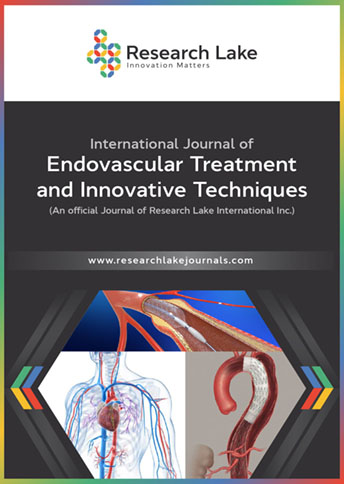An Iron Rod Impaling the Axilla with Major Vascular Injury: a Case Report
Ayman Khalil, MD. Consultant vascular surgery, AMC Hospital, Hurghada, Red Sea, Egypt.
Abstract
Background and Objective
Impalement injury is an uncommon cause of vascular trauma; however such spectacular injuries are associated with a high mortality rate and need to be managed by a multidisciplinary medical team at tertiary trauma center. The reported literature is scarce and no available well-written guidelines so that the management plan should be individualized and tailored to the situation at hand. The objective of this case study is to update our experience and protocols to maximize the clinical outcome and minimize the fatality rate of such challenging life-threatening events.
Methods
It is a case report of a 31-year construction worker that sustained an impalement injury when he fell down on an iron rod traversing his left axilla; he was transferred to our hospital with a 90- cm rod in situ. The patient was rapidly resuscitated and investigated preparing him for prompt surgical intervention; the metallic rod was extracted at the theater gently under direct vision with gushing out of blood due to the major vascular injury that was immediately controlled, followed by proper washout and thorough debridement of all devitalized tissues. Then, exploration of the neurovascular bundle at the axilla showed an injury of the axillary vein for which primary repair was successfully performed, but fortunately the axillary artery and brachial plexus were intact. Results: The patient had uneventful postoperative course with no complications and his limb was saved; he is being followed for 14 months up till now.
Conclusion
Major vascular injuries caused by impalement accidents are rare events; however they are challenging and may be fatal. Our current conclusions and recommendations are deficient and we need more updated research work to improve the outcome and decrease the number of deaths. We can acknowledge the end points which include careful and rapid transportation of the patient to a tertiary trauma centre with the impaled objects in situ that should be extracted only at the theater, proper diagnosis and prompt surgical intervention by a multidisciplinary team.
Copyright (c) 2021 Ayman Andrawis Khalil

This work is licensed under a Creative Commons Attribution-NonCommercial 4.0 International License.
Copyright © by the authors; licensee Research Lake International Inc., Canada. This article is an open access article distributed under the terms and Creative Commons Attribution Non-Commercial License (CC BY-NC) (http://creativecommons.org/licenses/by-nc/4.0/).











